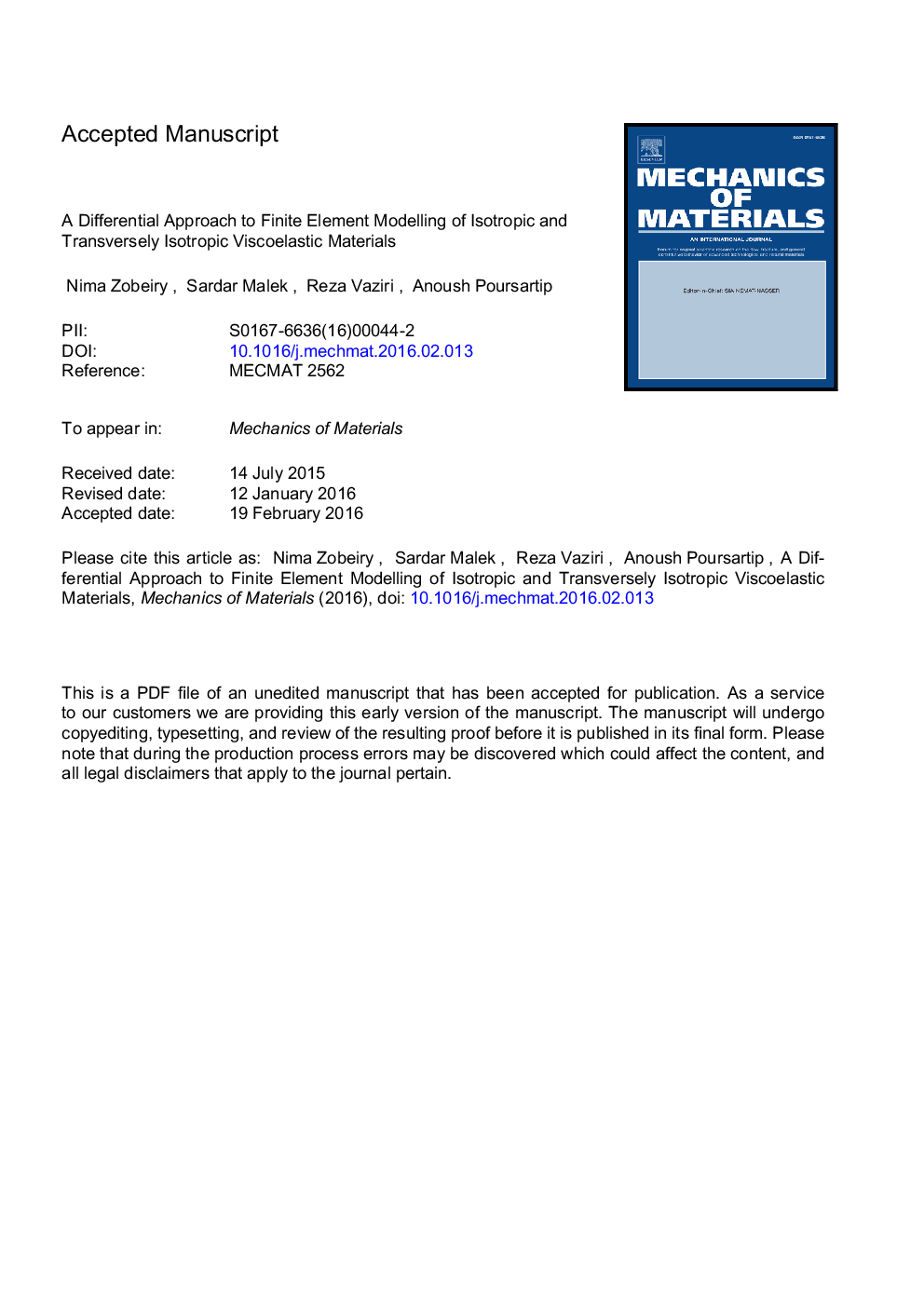| Article ID | Journal | Published Year | Pages | File Type |
|---|---|---|---|---|
| 7178634 | Mechanics of Materials | 2016 | 44 Pages |
Abstract
In previous publications by the authors (Zobeiry et al., 2006; Zobeiry et al., 2010), a differential form of viscoelasticity was presented as an efficient approach for modelling the response of polymer matrix composites. In this paper, the one-dimensional formulation previously presented in (Zobeiry et al., 2006), is extended to include the three-dimensional behaviour of both isotropic and transversely isotropic viscoelastic materials. For this purpose, the time-dependent variation of all material properties and effect of temperature changes are taken into account. The finite element formulation of the constitutive equation is developed such that it can be applied solely at the integration point level of an element, thus facilitating its implementation in most commercial finite element codes. In this study, the constitutive formulation is implemented in the finite element software, Abaqus, as a user material model and is verified through simulation of a few benchmark numerical examples. The capabilities of the current differential viscoelasticity approach compared to other available viscoelastic models, in terms of both accuracy and efficiency, are demonstrated and discussed.
Keywords
Related Topics
Physical Sciences and Engineering
Engineering
Mechanical Engineering
Authors
Nima Zobeiry, Sardar Malek, Reza Vaziri, Anoush Poursartip,
